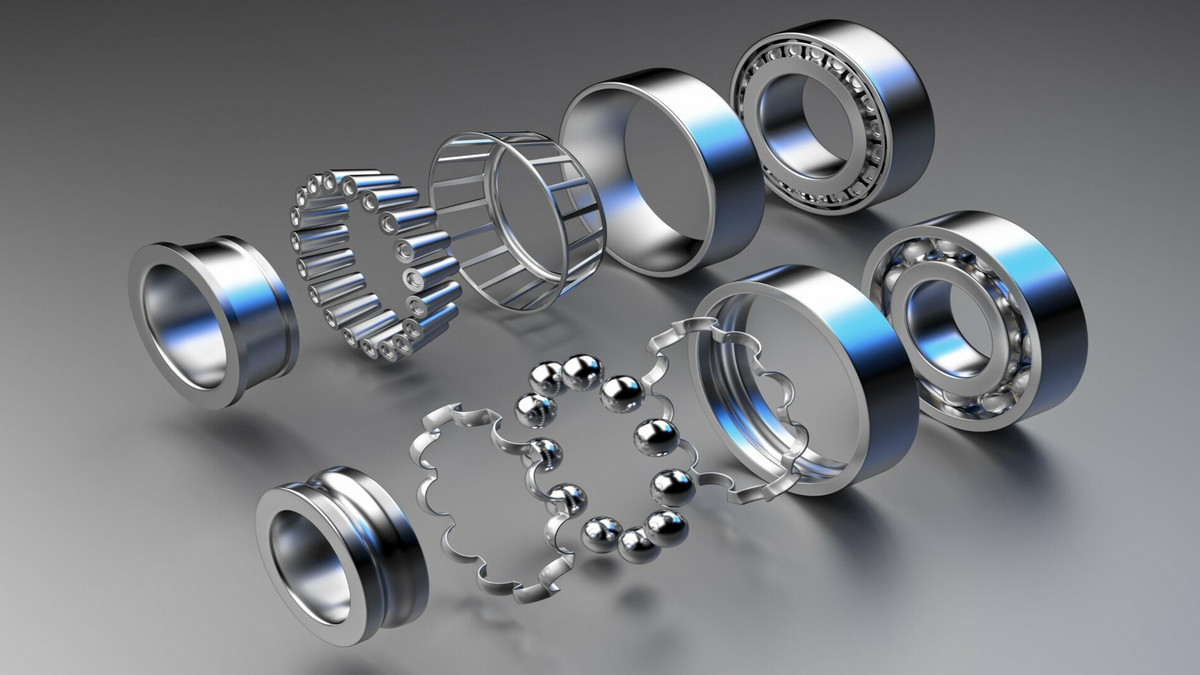Bearings are an important part of a protective mechanical facility that is very common in our daily production and life. Its main function is to support the mechanical rotating body, reduce the friction coefficient during its movement, and ensure its rotation accuracy. How many types of common bearings are there? What are the uses of bearings?
Angular Contact Ball Bearings
There is a contact angle between the ferrule and the ball. The standard contact angle is 15°, 30° and 40°. The larger the contact angle is, the greater the axial load capacity is. The smaller the contact angle is, the more favorable it is for high-speed rotation. Single row bearings can bear radial load and one-way axial load. Structurally, two single row angular contact ball bearings combined on the back share the inner ring and outer ring, which can bear radial load and bidirectional axial load.
Main application: single row: machine tool spindle, high frequency motor, gas turbine, centrifugal separator, small car front wheel, differential pinion shaft. Double column: oil pump, roots blower, air compressor, various transmissions, fuel injection pump, printing machinery.
Self-aligning Ball Bearings
Double rows of steel balls, the raceway of the outer ring is an inner spherical type, so it can automatically adjust the misalignment of the shaft caused by the deflection or non-concentricity of the shaft or shell, and the bearing with a tapered hole can be easily installed on the shaft by using fasteners.
Main application: woodworking machinery, textile machinery transmission shaft, vertical self-aligning bearing with seat.
Spherical Roller Bearings
This type of bearing is equipped with spherical rollers between the outer ring of the spherical raceway and the inner ring of the double raceway. According to the different internal structures, it is divided into four types: R, RH, RHA and SR. Due to the arc center of the outer ring raceway consistent with the center of the bearing, it has self-aligning performance, so it can automatically adjust the shaft center misalignment caused by the deflection or misalignment of the shaft or shell, and can bear radial load and bidirectional axial load.
Main applications: papermaking machinery, deceleration devices, railway vehicle axles, rolling mill gearbox seats, rolling mill roller tables, crushers, vibrating screens, printing machinery, woodworking machinery, various industrial reducers, vertical self-aligning bearings with seats.
Thrust Self-Aligning Roller Bearing
The spherical rollers in this type of bearing are arranged obliquely. Because the raceway surface of the seat ring is spherical and has self-aligning performance, it can allow the shaft to have a certain inclination, and the axial load capacity is very large. Radial loads are generally lubricated with oil.
Main applications: hydraulic generators, vertical motors, propeller shafts for ships, reducers for rolling screws in rolling mills, tower cranes, coal mills, extrusion machines, and forming machines.
Tapered Roller Bearings
This type of bearing is equipped with truncated cylindrical rollers, and the rollers are guided by the large rib of the inner ring. The design makes the vertices of the inner ring raceway surface, the outer ring raceway surface and the roller rolling surfaces of the conical surfaces intersect on the center line of the bearing. Single-row bearings can bear radial loads and one-way axial loads, double-row bearings can bear radial loads and two-way axial loads, and are suitable for heavy loads and impact loads.
Main application: Automobile: front wheel, rear wheel, transmission, differential pinion shaft. Machine tool spindles, construction machinery, large agricultural machinery, gear reduction devices for railway vehicles, roll necks and reduction devices for rolling mills.
Deep Groove Ball Bearings
Structurally, each ring of the deep groove ball bearing has a continuous groove type raceway with a cross section of about one-third of the equatorial circumference of the ball. Deep groove ball bearings are mainly used to bear radial loads, and can also bear certain axial loads.
When the radial clearance of the bearing increases, it has the properties of an angular contact ball bearing and can bear alternating axial loads in two directions. Compared with other types of bearings with the same size, this type of bearing has a small friction coefficient, high limit speed, and high precision. It is the preferred bearing type for users when selecting models.
Main applications: automobiles, tractors, machine tools, motors, water pumps, agricultural machinery, textile machinery, etc.
Thrust Ball Bearings
It consists of a washer-shaped raceway ring with a raceway, a ball and a cage assembly. The raceway ring that matches the shaft is called the shaft ring, and the raceway ring that matches the housing is called the seat ring. Two-way bearings match the secret shaft of the middle ring, one-way bearings can bear one-way axial loads, and two-way bearings can bear two-way axial loads (neither of them can bear radial loads).
Main application: Automobile steering pin, machine tool spindle.
To be continued...














